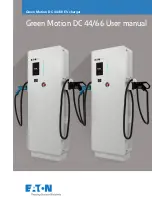
Roof-rail airbags are not intended to inflate in frontal
impacts, near-frontal impacts, rollovers, or rear impacts.
A roof-rail airbag is intended to deploy on the side of
the vehicle that is struck.
In any particular crash, no one can say whether an
airbag should have inflated simply because of the
damage to a vehicle or because of what the repair costs
were. For frontal airbags, inflation is determined by
what the vehicle hits, the angle of the impact, and how
quickly the vehicle slows down. For roof-rail airbags,
deployment is determined by the location and severity
of the side impact.
What Makes an Airbag Inflate?
In a deployment event, the sensing system sends
an electrical signal triggering a release of gas from
the inflator. Gas from the inflator fills the airbag
causing the bag to break out of the cover and deploy.
The inflator, the airbag, and related hardware are
all part of the airbag module.
Frontal airbag modules are located inside the
steering wheel and instrument panel. For vehicles
with roof-rail airbags, there are airbag modules in
the ceiling of the vehicle, near the side windows
that have occupant seating positions.
How Does an Airbag Restrain?
In moderate to severe frontal or near frontal collisions,
even belted occupants can contact the steering wheel
or the instrument panel. In moderate to severe side
collisions, even belted occupants can contact the inside
of the vehicle.
Airbags supplement the protection provided by
safety belts. Frontal airbags distribute the force of the
impact more evenly over the occupant’s upper body,
stopping the occupant more gradually. Roof-rail airbags
distribute the force of the impact more evenly over
the occupant’s upper body.
But airbags would not help in many types of collisions,
primarily because the occupant’s motion is not
toward those airbags. See When Should an Airbag
Inflate? on page 1-58 for more information.
Airbags should never be regarded as anything more
than a supplement to safety belts.
1-59
Summary of Contents for 2008 Allure
Page 74: ...NOTES 1 70...
Page 126: ...NOTES 2 52...
Page 129: ...NOTES 3 3...
Page 130: ...Instrument Panel Overview 3 4...
Page 226: ...NOTES 3 100...
Page 274: ...When you open the hood on the 3 8L V6 engine this is what you will see 5 14...
Page 276: ...When you open the hood on the 5 3L V8 engine here is what you will see 5 16...
Page 376: ...NOTES 5 116...
Page 390: ...Engine Drive Belt Routing 3 6L V6 Engine 3 8L V6 Engine 6 14...
Page 391: ...5 3L V8 Engine 6 15...
Page 412: ...NOTES 7 18...
















































